Ben Horowitz
description: an American entrepreneur and co-founder of the venture capital firm Andreessen Horowitz
49 results
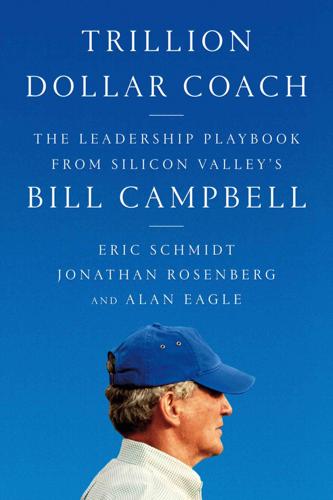
Trillion Dollar Coach: The Leadership Playbook of Silicon Valley's Bill Campbell
by
Eric Schmidt
,
Jonathan Rosenberg
and
Alan Eagle
Published 15 Apr 2019
To say he was tremendously respected would be a gross understatement—loved is more like it. Among the audience that day were dozens of technology leaders—Larry Page. Sergey Brin. Mark Zuckerberg. Sheryl Sandberg. Tim Cook. Jeff Bezos. Mary Meeker. John Doerr. Ruth Porat. Scott Cook. Brad Smith. Ben Horowitz. Marc Andreessen. Such a concentration of industry pioneers and power is rarely seen, at least not in Silicon Valley. We—Jonathan Rosenberg and Eric Schmidt—sat among the audience, making subdued small talk, soft sunshine contrasting with the somber mood. We had both worked closely with Bill in the previous fifteen years, since we had joined Google as the CEO (Eric, in 2001) and the head of products (Jonathan, in 2002).
…
He coached Dick Costolo, former CEO of Twitter. He coached Mike McCue, CEO of Flipboard. He coached Donna Dubinsky, CEO of Numenta. He coached Nirav Tolia, CEO of Nextdoor. He coached Lee C. Bollinger, president of Columbia University. He coached Shellye Archambeau, former CEO of MetricStream. He coached Ben Horowitz, partner at venture capital firm Andreessen Horowitz. He coached the boys and girls flag football teams at Sacred Heart. He coached Bill Gurley, general partner at venture capital firm Benchmark. He coached NFL Hall of Famer Ronnie Lott. He coached Danny Shader, CEO of Handle Financial. He coached Sundar Pichai, CEO of Google.
…
Bill’s principles have helped us and many others do that; we believe they can help you, too. There was only one Coach Bill. But this book, we hope, captures his insights in a way that makes them available to current and future leaders, so those leaders can benefit from his wisdom and humanity as much as the people who knew him did. As Ben Horowitz puts it, “You don’t want to channel Bill, because no one can be him. But I learned from him how to get better: a higher level of honesty, a better understanding of people and management.” DON’T F*** IT UP In writing this book, we interviewed dozens of people whose lives have been profoundly touched by Bill in one way or another.
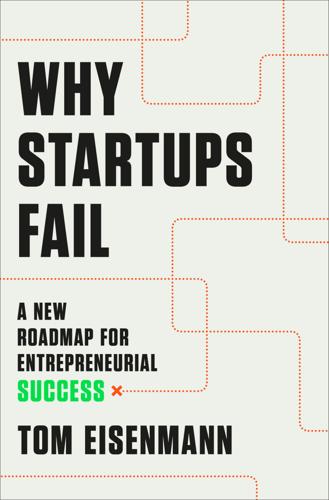
Why Startups Fail: A New Roadmap for Entrepreneurial Success
by
Tom Eisenmann
Published 29 Mar 2021
The OKR (objectives and key results) system for performance management, used in many tech companies, is described in John Doerr, Measure What Matters: How Google, Bono, and the Gates Foundation Rock the World with OKRs (New York: Portfolio, 2018); and First Round Review, “AltSchool’s CEO Rebuilt Google’s Performance Management System to Work for Startups—Here It Is,” First Round Review website, which interviews Max Ventilla, who discusses adapting OKRs to startups. Venture capitalist Ben Horowitz defines: Ben Horowitz, What You Do Is Who You Are: How to Create Your Business Culture (New York: HarperCollins, 2019). For additional perspectives on managing a scaling startup’s culture, see Horowitz, The Hard Thing; Blumberg, Startup CEO, Ch. 9; Hoffman and Yeh, Blitzscaling, Part IV; Dharmesh Shah, “Does HubSpot Walk the Talk on Its Culture Code?”
…
For example, in finance, specialists maintain control over spending and disbursements; in human resources, they manage recruiting processes, promotion reviews, compensation, benefits, and employee training. Executive Turnover. As specialists proliferate, it may become clear that members of the venture’s original management team—possibly including the founder/CEO—now lack the knowledge and skills to lead their units successfully. As Ben Horowitz, co-founder of the venture capital firm Andreessen Horowitz, puts it, “Managing at scale is a learned skill rather than a natural ability. Nobody comes out of the womb knowing how to manage a thousand people.” In some cases, senior team members may not have enough experience in their functions to hire and effectively manage the specialists who now report to them.
…
As we’ll see in Chapter 8, the limitations of the system used by Dot & Bo to track order and inventory status contributed significantly to shipping delays that led to customer complaints. Resolving these problems reduced Dot & Bo’s profit margin, causing the company to burn through its capital faster than expected. Shared Values Venture capitalist Ben Horowitz defines company culture as how employees make decisions when their boss isn’t there. In a company with a strong culture, employees “just know” what to do when confronted with a nonroutine issue. For example, if an important customer asks to have their order expedited—which would make other customers’ orders late—employees will know, without consulting their superiors, whether to comply.

Secrets of Sand Hill Road: Venture Capital and How to Get It
by
Scott Kupor
Published 3 Jun 2019
Cofounded by Marc Andreessen, the already revered cofounder of Netscape, LoudCloud was trying to create a compute utility (much like Amazon Web Services has now created). Among the other cofounders was Ben Horowitz. This was the fall of 1999, and the dot-com excitement was in full swing. I had finally opened my eyes to what was happening around me, and I wanted to be a part of it. When my friend at E.piphany offered me the chance to meet Marc Andreessen and Ben Horowitz and see what they were doing, it was too much to pass up. My wife, who was about five months pregnant at the time with our first child and who was busy closing on the first house we were buying together, didn’t see it quite the same way.
…
Contrast that to today, where we have about 2.5 billion smartphone users with ubiquitous connectivity to the internet and the potential for that number to double over the next ten years. All of a sudden, businesses that couldn’t work profitably at 50 million users take on a very different look when they can appeal to a mass-market audience. After meeting with Marc, I also interviewed with a number of other members of the team, including cofounder Ben Horowitz. The setting for that interview was more normal, as we met on a Saturday at the company’s offices. But I remember being surprised by Ben’s attire—he was fully decked out in Oakland Raiders garb, including T-shirt, watch, and baseball hat. I now know, after many years of working side by side with Ben, that his attire was completely in character.
…
Prior to this time, the entrepreneurial community was more dispersed, and therefore knowledge sharing between members of the community was decidedly limited. But with knowledge comes power, thus the second material driver of the changing balance of power between entrepreneurs and VCs. Something More And that takes us to the founding of Andreessen Horowitz, started in 2009 by Marc Andreessen and Ben Horowitz. What Marc and Ben saw was this fundamental shift in the landscape that would no longer make access to capital alone a sufficient differentiator for VC firms. Rather, in their view, VCs would need to provide something more than simply capital, for that was becoming a commodity, and instead, in this post-2005 era of VC, firms would need to compete for the right to fund entrepreneurs by providing something more.
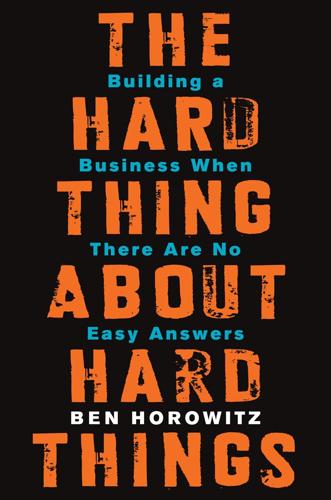
The Hard Thing About Hard Things: Building a Business When There Are No Easy Answers
by
Ben Horowitz
Published 4 Mar 2014
Then, just two weeks before the launch, Marc, without telling Mike or me, revealed the entire strategy to the publication Computer Reseller News. I was livid. I immediately sent him a short email: To: Marc Andreessen Cc: Mike Homer From: Ben Horowitz Subject : Launch I guess we’re not going to wait until the 5th to launch the strategy. — Ben Within fifteen minutes, I received the following reply. To: Ben Horowitz Cc: Mike Homer, Jim Barksdale (CEO), Jim Clark (Chairman) From: Marc Andreessen Subject: Re: Launch Apparently you do not understand how serious the situation is. We are getting killed killed killed out there.
…
Frank revealed his plan to remove all of our software immediately, demanding all funds to be returned. He was dead serious. Anthony remained calm, looked him in the eye, and said, “Frank, I will do exactly as you say. I’ve heard you loud and clear. This is a terrible moment for you and for us. Allow me to use your phone, and I will call Ben Horowitz and give him your instructions. But before I do, can I ask you one thing? If my company made the commitment to fix these issues, how much time would you give us to do that?” He responded, “Sixty days.” Anthony told him the clock had just started ticking and left his office immediately. It was good news: We had exactly sixty days to fix all the problems and make the deployment work.
…
I thank Andy Rachleff for being a great gentleman and friend. Thank you, Sy Lorne, for keeping me out of trouble. Thank you, Mike Volpi, for being on the board of a very scary company. Finally, thank you, Boochie, Red, and Boogie, for being the best children that I could imagine. ABOUT THE AUTHOR BEN HOROWITZ is the cofounder and general partner of Andreessen Horowitz, a Silicon Valley–based venture capital firm that invests in entrepreneurs building the next generation of leading technology companies. The firm’s investments include Airbnb, GitHub, Facebook, Pinterest, and Twitter. Previously he was cofounder and CEO of Opsware, formerly Loudcloud, which was acquired by Hewlett-Packard for $1.6 billion in 2007.

How I Built This: The Unexpected Paths to Success From the World's Most Inspiring Entrepreneurs
by
Guy Raz
Published 14 Sep 2020
The purpose of that story changes with time and with whom it is being told to, but fundamentally its goal is to answer a hundred different variations on one simple question: Why? Why should I buy your product? Why should I join this company? Why should I be excited to work here? Why should I invest in this company? These are just a few of the variations identified by Ben Horowitz, the brilliant tech entrepreneur, best-selling author, and co-founder of the venture capital firm Andreessen Horowitz. He described in 2010 how his company evaluates CEOs, whose main job, he contends, is to be “the keeper of the vision and the story.” A few years later, in talking to Forbes, Horowitz put the role of the company’s story even more succinctly: “The story must explain at a fundamental level why you exist.”
…
It speaks to the power and importance of a good and catchy name. Especially when it comes to conveying your story to customers and investors and employees as you begin to grow. It’s equally important for understanding the story yourself, for staying anchored to why you do what you do and, to Ben Horowitz’s point, why your company exists. I ask virtually every founder I interview about the name of their company, and for almost all of them, the question is like a trigger that sends the story of the company’s founding practically shooting right out of them. Inevitably, it’s a story that unearths the very reasons why the company exists, and sometimes even explains how both the company and the founder have managed to succeed for as long as they have.
…
The stories of Bumble and Airbnb are unique to themselves, but what is true across industries and across time is that all businesses are stories, and all stories are a process. They are a mechanism for thinking deeply about yourself, your product or service, your employees, your customers, your market, and the world. They explain each to all the others in a way that facts and figures never can. Ben Horowitz is right: knowing your story and being able to clearly articulate to the world why you exist is one of your most important challenges as an entrepreneur. Not because it helps you sell more product, or build a cooler brand, or make more money—though all those things are true. Rather, the basic story that answers the big “why” questions is the one that creates loyal customers, finds the best investors, builds an employee culture that keeps them committed to the venture, and keeps you committed and grinding away when things get really hard and you want to give up (and you will).
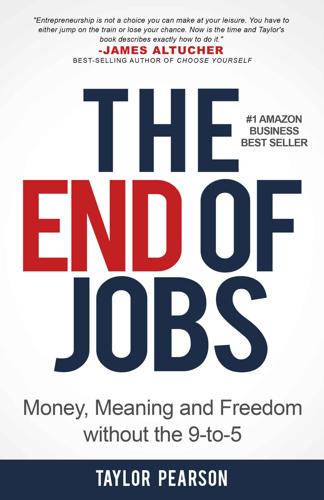
The End of Jobs: Money, Meaning and Freedom Without the 9-To-5
by
Taylor Pearson
Published 27 Jun 2015
Your Middle Class existence isn’t just being squeezed by overseas workers, it’s being squeezed by technology being developed just down the street. 2 The Acceleration of Technology All That Is Old Is New Again Venture capitalist firms are famous for their investment theses, the basic premise that fuels their investing strategy. These are simple statements which result in the investment of billions of dollars. Andreessen-Horowitz, a Venture capital firm started by Marc Andreessen and Ben Horowitz, that manages $4 billion as of March 2014, operates on an investment thesis of five words: Software is Eating the World. What is so profound in those five words that it directs how they invest billions of dollars? The trend Andreessen Horowitz is betting on may seem new and disruptive, but it’s just the next step in a well-understood process that’s been happening for hundreds of years: technological innovation.
…
The problem is solved, instead, by testing new solutions and seeing the reaction. Chaotic is the domain where there is no relationship between cause and effect. We must act in spite of the disorder, to develop ways to survive. In his book, The Hard Thing About Hard Things, venture capitalist and former CEO Ben Horowitz recounts taking his company public during the 2001 crash. In the midst of layoffs and and sales falling off a cliff as the tech bubble crashed, he had to convince investors they should put more money into the company. There’s no guide book for that nor college course. Over the course of the 20th century, we’ve started moving the workforce around the Cynefin graph.
…
Those are three specific examples, but this is true for all the different tools required to start a business. The advantages are profound: Dramatic reduction in risk and cost—you’re often paying just 1% of the cost to get started compared to ten years ago. Dramatic increase in potential—because you can only buy as much as you need, you can buy best-in-class software. Venture capitalist Ben Horowitz, the CEO of the first cloud computing company, Loudcloud, said his customers were paying approximately $150,000 a month in 2000 to run a basic Internet application. Running that same application today in Amazon’s cloud costs about $1,500 a month. If the same decrease had happened to cars and homes, a $50,000 luxury car would cost $500 today and a half million dollar home would cost $5,000.
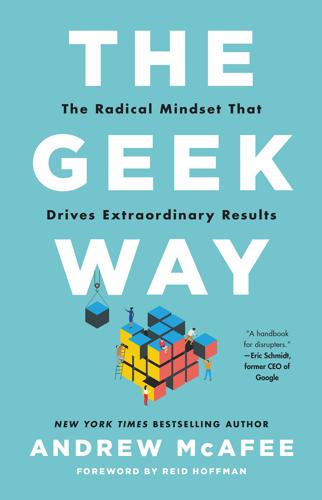
The Geek Way: The Radical Mindset That Drives Extraordinary Results
by
Andrew McAfee
Published 14 Nov 2023
Netscape had recently gone public after launching the first commercially successful web browser, but Microsoft was preparing its own major moves. Ben Horowitz was in charge of some of Netscape’s important strategic countermoves, which were going to be announced at a splashy launch event in New York on March 5, 1996. However, these countermoves were revealed a couple weeks early by Marc Andreessen, the inventor of one of the first web browsers and, at the age of twenty-two, cofounder of Netscape. Andreessen revealed Netscape’s strategy in an interview for Computer Reseller News. Horowitz was not pleased about the interview, and wrote Andreessen a short email: To: Marc Andreessen Cc: [Horowitz’s boss] From: Ben Horowitz Subject: Launch I guess we’re not going to wait until the 5th to launch the strategy.
…
Horowitz was not pleased about the interview, and wrote Andreessen a short email: To: Marc Andreessen Cc: [Horowitz’s boss] From: Ben Horowitz Subject: Launch I guess we’re not going to wait until the 5th to launch the strategy. —Ben In less than fifteen minutes, Andreessen wrote back: To: Ben Horowitz Cc: [Horowitz’s boss], [Netscape CEO], [Netscape Chairman] From: Marc Andreessen Subject: Re: Launch Apparently you do not understand how serious the situation is. We are getting killed killed killed out there. Our current product is radically worse than the competition. We’ve had nothing to say for months. As a result, we’ve lost over $3B in market capitalization. We are now in danger of losing the entire company and it’s all server product management’s fault.
…
Science distinguishes between rival hypotheses. It tells which idea is better. I speak from ample personal experience when I say that when your idea is found lacking—when the evidence doesn’t support it, or someone convincingly argues against it—negative emotions ensue. But geek companies recognize that we can handle them. As Ben Horowitz says, “With Marc [Andreessen] and me, even after eighteen years, he upsets me almost every day by finding something wrong in my thinking, and I do the same for him. It works.” They’re friends and business partners, despite the upsets that come with argumentation. Not having undiscussable topics: Recall Andreessen’s insight from chapter 4: “[At] a lot of companies,… people have trepidations about speaking truth to power.
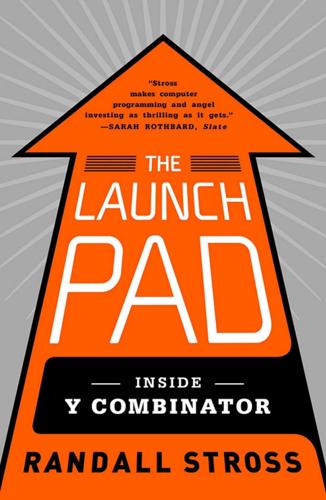
The Launch Pad: Inside Y Combinator, Silicon Valley's Most Exclusive School for Startups
by
Randall Stross
Published 4 Sep 2013
Marc Andreessen, “Why Software Is Eating the World,” Wall Street Journal, August 20, 2011, http://online.wsj.com/article/SB10001424053111903480904576512250915629460.html. Andreessen devotes the essay to illustrating the phrase. Andreessen’s partner, Ben Horowitz, mentioned the phrase briefly two months earlier in an essay that challenged the contention that “we are in a new tech bubble,” in an online debate hosted by The Economist: Ben Horowitz, “Against the Motion,” The Economist, June 14, 2011, www.economist.com/debate/days/view/710. 3. PG described his reaction to the Y Combinator function when he first encountered it: “You wouldn’t necessarily have expected such a thing to be possible.
…
They’re going to say, ‘It’s because people can circumvent you,’ or they don’t understand the market, or one of their standard ‘It’s not you, it’s me’ lines. Don’t try and fight them. If they say, ‘You’re circumventable,’ don’t say, ‘Oh, no! But we’re not!’ Because what they really mean is, ‘We don’t like the way you look.’” Knox says, “You said it, but Ben Horowitz, I think, also said it: ‘Listen to the answer, don’t listen to the reason.’ So, no is no. Got it.” “So who knows?” Graham sums up. “Whether any will be interested, what the valuation will be—it’s totally unpredictable. That’s true in general, but most of all with you guys.” The session ends without a cheery note to neutralize the depressive speculation about investors turning Science Exchange away.
…
Parse and Vidyard each raised about $7 million, and Codecademy raised $10 million in a second round of financing1 to add to the $2.5 million it had raised earlier. The largest sum raised, however, was by Rap Genius, which for its first venture capital round landed $15 million from Andreessen Horowitz. Marc Andreessen composed the announcement, which, fittingly, was posted and annotated on Rap Genius’s Web site. He observed that his partner Ben Horowitz was “a noted rap fanatic,” but more important, Andreessen was gripped by the idea of annotating the entire world, creating “the Internet Talmud.”2 Taking the first steps to expand beyond rap and realize that grand ambition, Rap Genius set up two new sites as online gathering places for those with shared interests in poetry and literature (PoetryBrain.com) and rock ‘n’ roll (StereoIQ.com).

Masters of Scale: Surprising Truths From the World's Most Successful Entrepreneurs
by
Reid Hoffman
,
June Cohen
and
Deron Triff
Published 14 Oct 2021
By the time I ended up leaving Foursquare—even a couple of years later—we had over a million merchants. When I started, we were three people. By the time I left, we were 150. And quite frankly, I wanted to go out and build ambitious things myself.” He landed in the perfect place to plan his next move. Ben Horowitz, a founding partner at the iconic venture capital firm Andreessen Horowitz, invited Tristan to just hang around the office and think big, as their Entrepreneur in Residence, or EIR. He spent several months casting around for his big idea: “I wanted to build a bank. I wanted to fix freight and trucking.
…
“The industry’s dominated by the multi-blade use case with billions and billions of dollars to attack you with patent protection.” (“No.”) “To do it in Silicon Valley—that’s crazy.” (“No.”) As is often the case when pitching a bold idea, there was one lone early champion. In this case it was the VC Ben Horowitz from Andreessen Horowitz, the one who had invited Tristan to hang around the office for a few months and think big. “I knew if I came up with ideas that were awful, Ben would tell me the truth. And he did,” says Tristan. “Finally, I brought my idea to Ben and he’s like, ‘That’s the idea.’ ” (It’s worth noting that Ben has family members who are Black.)
…
You have to talk to people who will challenge you, in the right ways, to find the biggest and best version of an idea that’s right for you. So Tristan went to a place where ideas are not only in the air but bouncing off the walls—the iconic venture capital firm Andreessen Horowitz. Recognizing Tristan’s eye for innovation, Ben Horowitz, a founding partner there, invited Tristan to “hang around the office and think big,” naming him an Entrepreneur in Residence. As an entrepreneur, you should intentionally create the time and space—every day—to open yourself up to new ideas. This means you have to put yourself in situations where your great ideas are likely to strike.

An Ugly Truth: Inside Facebook's Battle for Domination
by
Sheera Frenkel
and
Cecilia Kang
Published 12 Jul 2021
Chapter 10: The Wartime Leader 1. She reminded everyone of the company’s mission statement: Josh Constine, “Facebook Changes Mission Statement to ‘Bring the World Closer Together,’” TechCrunch, June 22, 2017. 2. “Peacetime CEO works to minimize”: Ben Horowitz, “Peacetime CEO/Wartime CEO,” blog post on a16z website, April 14, 2011. 3. In public speeches and interviews: Ben Horowitz, “Ben Horowitz on the Lessons He Learned from Intel’s Andy Grove,” March 22, 2016, Bloomberg interview can be accessed on Youtube. 4. came on the heels of a major reorganization: Kurt Wagner, “Facebook Is Making its Biggest Executive Shuffle in Company History,” Vox, May 8, 2018. 5.
…
It faced multiple investigations by regulators around the world. Shareholders, users, and consumer activists were pursuing lawsuits in court. “Up until now, I’ve been a peacetime leader,” Zuckerberg declared. “That’s going to change.” He had been influenced by a book called What You Do Is Who You Are, by Ben Horowitz, one half of Andreessen Horowitz, the VC firm that invested early in Facebook. (Marc Andreessen, Zuckerberg’s friend and a Facebook board member, was the other half.) In his book, Horowitz argues that at various stages of development, tech companies demand two kinds of CEOs: wartime and peacetime leaders.
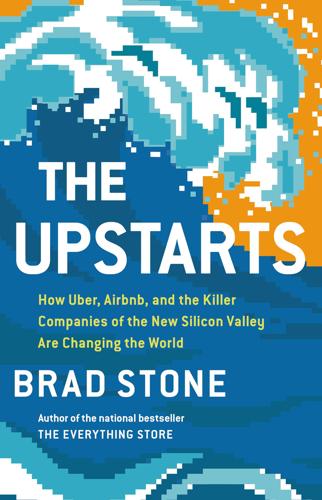
The Upstarts: How Uber, Airbnb, and the Killer Companies of the New Silicon Valley Are Changing the World
by
Brad Stone
Published 30 Jan 2017
They couldn’t see a company that might end up appealing not just to twenty-somethings from Europe but to real adults, even retired couples, who were seeking more authentic experiences when they traveled. Marc Andreessen, the Netscape founder and investor, had just started his own venture capital firm with partner Ben Horowitz when he passed on Airbnb’s Series A round of funding. Andreessen liked to say that the goal of their firm, Andreessen Horowitz, was to identify the fifteen or so tech startups every year that actually mattered and back as many of them as possible.13 The firm took a long look at Airbnb and whiffed.
…
With fresh capital in the bank, they agreed, Uber needed to do one thing right away—expand out of San Francisco and into every major city in the world. PART II EMPIRE BUILDING CHAPTER 6 THE WARTIME CEO Airbnb Fights on Two Fronts The Peacetime CEO does not resemble the Wartime CEO. —Ben Horowitz, Ben’s Blog1 The pall hanging over Silicon Valley from the financial crisis started to lift in 2011. Facebook led the way in January, raising half a billion dollars from an investor group headed by Goldman Sachs after announcing that it had signed up more than five hundred million users. The professional networking site LinkedIn went public in May, scoring a four-billion-dollar market capitalization.
…
A few other firms expressed interest, but Kalanick’s clear favorite was the newest sugar daddy on Menlo Park’s Sand Hill Road: Andreessen Horowitz, the two-year-old firm that a few months before had led the Series B round in Airbnb, making the home-sharing startup a unicorn. The attraction for Kalanick was the same as it had been for Brian Chesky. The firm was led by entrepreneurs Marc Andreessen and Ben Horowitz and known for offering favorable terms at muscular valuations. Like Chesky, Kalanick wanted to enlist the services of Andreessen’s newest partner, Jeff Jordan, an expert in the peculiar dynamics of online marketplaces. At first, Andreessen Horowitz was the most aggressive pursuer, offering to value the startup at more than $300 million.

The Power Law: Venture Capital and the Making of the New Future
by
Sebastian Mallaby
Published 1 Feb 2022
He had become one of those swashbuckling capitalists he had admired in his youth, as American in spirit as a Kravis or a Vanderbilt. The most striking sign of Milner’s influence came from a surprising quarter. In early 2009, Marc Andreessen, the Netscape founder and Facebook board member, launched a venture firm together with a fellow Netscapee, Ben Horowitz. Like other splashy new entrants—Accel in the 1980s, Benchmark in the 1990s, Founders Fund in 2005—the new Andreessen Horowitz sought to differentiate itself: to claim it had invented a new kind of venture capital. Although the marketing spiel made no mention of Milner, the Milner effect was palpable.
…
It was a venture return from a basketball team.[1] The great basketball franchises have famous superfans whom the cameras seek out before the games: Jack Nicholson for the Los Angeles Lakers, Spike Lee for the New York Knicks. Naturally, the Golden team boasted a roster of Midas investors. Its ownership group featured Bob Kagle, the Benchmark partner who had invested in eBay, and Mark Stevens, a longtime stalwart at Sequoia. Its regular fans included Ben Horowitz, co-founder of a16z, and Ron Conway, the super-angel who had backed Google. And this fusing of sports and technology finance operated in two ways: the venture capitalists rooted for the Warriors, and the Warriors became venture capitalists. Kevin Durant, the team’s star forward, assembled a portfolio of some forty startups, ranging from the bike-sharing enterprise LimeBike to the food-delivery app Postmates.
…
They are the coaches, not the athletes. But this book has excavated multiple cases in which VC coaching made all the difference. Don Valentine rescued Atari and then Cisco from chaos. Peter Barris of NEA saw how UUNET could become the new GE Information Services. John Doerr persuaded the Googlers to work with Eric Schmidt. Ben Horowitz steered Nicira and Okta through their formative moments. To be sure, stories of venture capitalists guiding portfolio companies may exaggerate VCs’ importance: in at least some of these cases, the founders might have solved their own problems without advice from their investors. But quantitative research suggests that venture capitalists do make a positive impact: studies repeatedly find that startups backed by high-quality VCs are more likely to succeed than others.[7] A quirky contribution to this literature looks at what happens when airline routes make it easier for a venture capitalist to visit a startup.
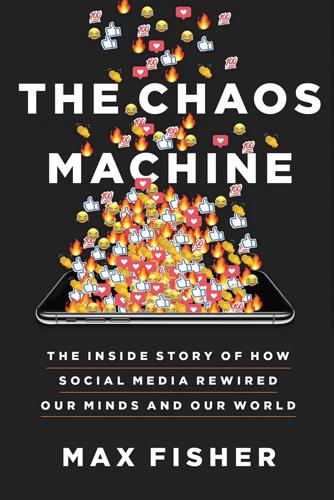
The Chaos Machine: The Inside Story of How Social Media Rewired Our Minds and Our World
by
Max Fisher
Published 5 Sep 2022
Fights Back,” Sandra Salmans, New York Times, January 9, 1982. 48 “I said, ‘Get an office’”: Osnos, 2018. 49 argued a 2018 op-ed: “What the Microsoft Antitrust Case Taught Us,” Richard Blumenthal and Tim Wu, New York Times, May 18, 2018. 50 a leader who “violates protocol”: “Peacetime CEO/Wartime CEO,” Ben Horowitz, A16z.com, April 15, 2011. 51 drew an extended parallel: “To Create Culture, Start a Revolution,” talk by Ben Horowitz to Startup Grind Global Conference, February 2017. 52 read a Horowitz-authored book: “How Mark Zuckerberg Became a Wartime CEO,” Casey Newton, The Verge, November 20, 2018. The book: The Hard Thing about Hard Things, Ben Horowitz, 2014. 53 gathered the company’s: “With Facebook at ‘War,’ Zuckerberg Adopts More Aggressive Style,” Deepa Seetharaman, Wall Street Journal, November 19, 2018. 54 hired a dark-arts PR: “Delay, Deny and Deflect: How Facebook’s Leaders Fought through Crisis,” Sheera Frenkel, Nicholas Confessore, Cecilia Kang, Matthew Rosenberg, and Jack Nicas, New York Times, November 14, 2018. 55 Prominent investors in the venture-capitalist: “Safe Space: Silicon Valley, Clubhouse, and the Cult of VC Victimhood,” Zoe Schiffer and Megan Farokhmanesh, The Verge, July 16, 2020. 56 “We get it”: Tweet by Balaji Srinivasan (@balajis), July 1, 2020. twitter.com/balajis/status/1278198087404515328 57 urging Valley-wide bans: Schiffer and Farokhmanesh. 58 meeting to consider retooling: Thompson and Vogelstein, 2019. 59 Kaplan successfully pushed: “Facebook Executives Shut Down Efforts to Make the Site Less Divisive,” Jeff Horwitz and Deepa Seetharaman, Wall Street Journal, May 26, 2020. 60 off-the-record dinners: “Inside Mark Zuckerberg’s Private Meetings with Conservative Pundits,” Natasha Bertran and Daniel Lippman, Politico, October 14, 2019. 61 “the death of free speech”: “Tucker Carlson: Facebook’s Zuckerberg Dictating Which Political Opinions You’re ‘Allowed to Have,’” Ian Schwartz, Realclearpolitics.com, May 2, 2019. 62 allow politicians to lie: “Facebook, Elections and Political Speech,” Nick Clegg, About.fb.com, September 24, 2019.
…
Senator Richard Blumenthal, a Connecticut Democrat, argued in a 2018 op-ed that the Microsoft case provided an explicit model for targeting Facebook, Google, and Amazon. Fending off such attacks would take more than lobbying. Starting that year, Zuckerberg and other tech chiefs adopted a posture that the venture capitalist Ben Horowitz had termed “wartime CEO.” If regulators swirl or the market dives, Horowitz had written in a blog post, companies need a leader who “violates protocol in order to win,” “uses profanity purposefully,” “is completely intolerant” of employees breaking from corporate strategy, “neither indulges consensus-building nor tolerates disagreements,” and embarrasses employees in front of their peers to make a point.

Disrupted: My Misadventure in the Start-Up Bubble
by
Dan Lyons
Published 4 Apr 2016
But they are, and this makes perfect sense, because that’s what mom-and-pop investors want to buy. Investors in the public markets want to get in on the ground floor of the next Facebook. So that’s what venture capitalists in Silicon Valley try to make for them, selecting “college dropouts with insane ideas going after tiny markets with no idea how to monetize,” as venture capitalist Ben Horowitz of Andreessen Horowitz once put it. At one time, venture capitalists who invested in a tech start-up with a young founder would insist on bringing in “adult supervision,” meaning an experienced executive to help build the business. But today the conventional wisdom among venture capitalists is that it’s better to leave a young founder in charge and give him (and it’s almost always a him) free rein.
…
At some point it seems to have dawned on Andreessen that the people who make the most money in Silicon Valley are not the ones who found companies or run them, but rather the ones who put up the capital. (At Netscape, he reportedly made as much as $100 million, while his investor and co-founder, Jim Clark, made $2 billion.) In 2009 Andreessen and his friend and former business partner Ben Horowitz launched Andreessen Horowitz, or a16z, as it is known. (The name is a “numeronym,” a way of shortening a word or phrase by using a number to represent the number of letters that have been left out. A, then sixteen letters, then Z. Tech geeks love stuff like this.) Andreessen and Horowitz developed a reputation for overpaying to get into deals, offering valuations that I’ve been told were 30 percent higher than what other venture capitalists would pay.
…
Horowitz wrote a book about his experience as an entrepreneur and posed for a Fortune magazine cover with his hands wrapped like a boxer, though he apparently does not actually box. He hangs out with rappers and spouts rap lyrics, cultivating a streetwise image—though in fact he was born in London and grew up in Berkeley, and his father is David Horowitz, a well-known author and conservative commentator. As the tech blog Valleywag summed it up, “Ben Horowitz Is Desperate for You to Think He’s Cool.” Andreessen and Wennmachers assiduously court the press. Andreessen has even invested in online publications that cover the tech industry, like Business Insider and Pando Daily. The result has been mostly favorable coverage for Andreessen Horowitz and the start-ups in its investment portfolio.
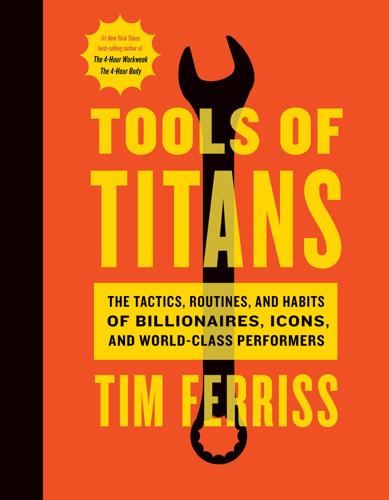
Tools of Titans: The Tactics, Routines, and Habits of Billionaires, Icons, and World-Class Performers
by
Timothy Ferriss
Published 6 Dec 2016
If the person closest to the deal has a very strong degree of positive commitment and enthusiasm about it, then we should do that investment, even if everybody else in the room thinks it’s the stupidest thing they’ve ever heard . . . however, you don’t get to do that completely on your own without stress-testing. If necessary, we create a ‘red team.’ We’ll formally create the countervailing force to argue the other side.” TF: To avoid the potential problem of newer hires getting battered more than senior folks, Marc and his founding partner, Ben Horowitz, make a point of smashing each other. “Whenever [Ben] brings in a deal, I just beat the shit out of it. I might think it’s the best idea I’ve ever heard of, but I’ll just trash the crap out of it and try to get everybody else to pile on. And then, at the end of it, if he’s still pounding the table saying, ‘No, no, this is the thing . . .’ then we say we’re all in.
…
Here are the top 17—everything with 3 or more mentions—in descending order of frequency: Tao Te Ching by Lao Tzu (5 mentions) Atlas Shrugged by Ayn Rand (4) Sapiens by Yuval Noah Harari (4) Siddhartha by Hermann Hesse (4) The 4-Hour Workweek by Tim Ferriss (4) The Checklist Manifesto by Atul Gawande (4) Dune by Frank Herbert (3) Influence by Robert Cialdini (3) Stumbling on Happiness by Daniel Gilbert (3) Superintelligence by Nick Bostrom (3) Surely You’re Joking, Mr. Feynman! by Richard P. Feynman (3) The 4-Hour Body by Tim Ferriss (3) The Bible (3) The Hard Thing About Hard Things by Ben Horowitz (3) The War of Art by Steven Pressfield (3) Watchmen by Alan Moore (3) Zero to One by Peter Thiel with Blake Masters (3) Enjoy! * * * Adams, Scott: Influence (Robert B. Cialdini) Altucher, James: Jesus’ Son: Stories (Denis Johnson), The Kite Runner; A Thousand Splendid Suns (Khaled Hosseini), Antifragile; The Black Swan; Fooled by Randomness (Nassim Nicholas Taleb), Brain Rules (John Medina), Outliers (Malcolm Gladwell), Freakonomics (Steven D.
…
Grove), Zero to One: Notes on Startups, or How to Build the Future (Peter Thiel with Blake Masters), Walt Disney: The Triumph of the American Imagination (Neal Gabler), Schulz and Peanuts: A Biography (David Michaelis), The Wizard of Menlo Park: How Thomas Alva Edison Invented the Modern World (Randall E. Stross), Born Standing Up: A Comic’s Life (Steve Martin), The Hard Thing About Hard Things (Ben Horowitz) Arnold, Patrick: Jack Kennedy: Elusive Hero (Chris Matthews), From Chocolate to Morphine: Everything You Need to Know About Mind-Altering Drugs (Andrew Weil), Guns, Germs, and Steel (Jared Diamond) Attia, Peter: Mistakes Were Made (but Not by Me): Why We Justify Foolish Beliefs, Bad Decisions, and Hurtful Acts (Carol Tavris and Elliot Aronson), Surely You’re Joking, Mr.
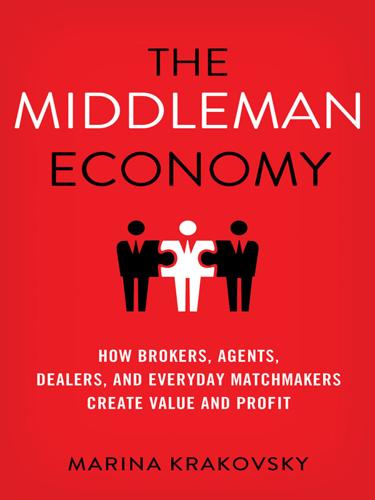
The Middleman Economy: How Brokers, Agents, Dealers, and Everyday Matchmakers Create Value and Profit
by
Marina Krakovsky
Published 14 Sep 2015
Marc Andreessen, perhaps the best-known VC working today, plots start-ups on a two-by-two matrix in which VCs should aim for the quadrant corresponding to nonconsensus and successful.28 It should go without saying that you cannot know for sure which ones will be successful, and even the best VCs are often wrong, but you do know which are nonconsensus. Andreessen and partner Ben Horowitz picked up much of their investment philosophy, probably including this idea, from investment advisor Andy Rachleff, a former partner at Benchmark Capital and founder of Wealthfront, a firm that uses technology to transform the investment advisory business.29 Rachleff, in turn, credits his “investment idol,” Howard Marks, with this framework.30 When the entrepreneur-turned-VC Peter Thiel asks, “What important truth do very few people agree with you on?”
…
See Irina Patterson and Candice Arnold, “Seed Capital from Angel Investors: Mike Maples, Founder and Managing Partner, Floodgate (Part 3),” One Million by One Million Blog, July 14, 2010, retrieved from http://www.sramanamitra.com/2010/07/14/seed-capital-from-angel-investors-mike-maples-founder-and-managing-partner-floodgate-part-3/. 26.Interview with Mike Maples Jr., September 17, 2014. 27.Paul Graham, “A Unified Theory of VC Suckage,” PaulGraham.com, March 2005, retrieved from http://www.paulgraham.com/venturecapital.html. 28.Russ Roberts, “Marc Andreessen on Venture Capital and the Digital Future,” EconTalk, May 19, 2014, retrieved from http://www.econtalk.org/archives/2014/05/marc_andreessen.html. 29.Ben Horowitz mentions Rachleff’s influence in an interview with Stanford engineering professor Tom Byers, “Disrupting the Venture Capital Industry,” Stanford Technology Ventures Program, Entrepreneurial Thought Leaders Series, November 19, 2014, retrieved from http://ecorner.stanford.edu/authorMate rialInfo.html?

Dogfight: How Apple and Google Went to War and Started a Revolution
by
Fred Vogelstein
Published 12 Nov 2013
He has been thinking about these issues and watching them evolve for more than twenty years, and he has been doing it from one of the best vantage points in the world—with the access to people and information only available to a select few Silicon Valley insiders. At the moment he and his partner, Ben Horowitz, are known as two of the top VCs in technology. But many have forgotten that Andreessen was also the cocreator of the first Internet browser, Mosaic, which became Netscape Communications in 1994. He helped sell it to America Online for $4 billion in 1999—despite losing the browser wars to Microsoft.
…
and; YouTube, see YouTube Google Maps; Android and; on iPhone; raw data from Google search; Android and; on iPhone; on Sidekick Go On Gore, Al gorilla glass Gosling, James Gould, Gordon GPS GrandCentral Communication graphical user interface Gray, Elisha GRiDPad Grignon, Andy; career of; competitive streak of; on Forstall and Fadell; iPhone development and; iPhone launch and; Jobs and Guardian, The, newspaper Gumstix boards Gundotra, Vic; at Google; Google Voice and; Jobs and; at Microsoft Hand, Learned Hawkins, Jeff HBO Heinen, Nancy Hertzfeld, Andy Hewitt, Joe Hewlett-Packard (HP) Homeland Horowitz, Ben Horowitz, Steve Hotelling, Steve House of Cards Howe, Elias, Jr. HTC; Apple’s lawsuit against; Evo 4G; Microsoft and; Nexus; One & Co. acquired by; in Open Handset Alliance; Sense; T-Mobile G1 Hulu Huppi, Brian Hurwitz, Mitchell iAd IBM iBooks iChat iMac Infineon Ingle, Laura Intel; Microsoft and Internet; Android and; Apple’s radio service; broadband; bubble; smartphones and Internet browsers; Chrome; Mosaic; Netscape In the Plex (Levy) IntoNow iOS software by Apple iPad; and Apple v.
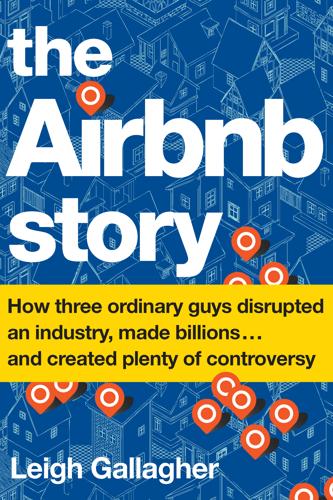
The Airbnb Story: How Three Ordinary Guys Disrupted an Industry, Made Billions...and Created Plenty of Controversy
by
Leigh Gallagher
Published 14 Feb 2017
He’d already begun this process with Airbnb’s earliest advisers: first, the weekly office-hours sessions with Michael Seibel and Y Combinator’s Paul Graham; then, breakfasts at Rocco’s with Sequoia’s Greg McAdoo. Airbnb’s next investment rounds unlocked access to Silicon Valley icons like Reid Hoffman, Marc Andreessen, and Ben Horowitz, all seen as gurus when it came to the art of building tech companies in Silicon Valley. The more successful Airbnb became, the more top people the founders had access to, and as it began to get bigger, Chesky started seeking out sources for specific areas of study: Apple’s Jony Ive on design, LinkedIn’s Jeff Weiner and Disney’s Bob Iger on management, Facebook’s Mark Zuckerberg on product, and Sheryl Sandberg on international expansion and on the importance of empowering women leaders.
…
It helped Chesky make the decision to build Airbnb’s own European business in order to compete with the Samwers. In the more recent crisis around the widespread discriminatory behavior on the Airbnb platform—even bigger in some ways than the EJ crisis—he pulled in outside sources like former attorney general Eric Holder and ACLU veteran Laura Murphy, but he also went to Andreessen Horowitz cofounder Ben Horowitz and his wife, Felicia, as well as to TaskRabbit CEO Stacy Brown-Philpot. Those closest to him praise Chesky for his vision. “You take a picture of Brian’s mind, [and] he’s in 2030 or 2040 already,” says Lisa Dubost, one of the company’s first employees, who worked on culture and then moved to the business-travel team before leaving the company in 2016 to move to Europe to be with her family.

Life After Google: The Fall of Big Data and the Rise of the Blockchain Economy
by
George Gilder
Published 16 Jul 2018
“Silicon Snake Oil,” wrote Ira Stoll in a famous book by that name.7 To the young Andreessen, all the problems signaled that he was “at the center of the sphere,” gazing in wild surmise at “a giant hole in the middle of the world”—the supreme opportunity of the age—http, html, the Mosaic browser, Netscape, all the components of a consumer Internet. Now, nearly twenty years later, he is on stage at the Bitcoin Summit being interviewed by a Forbes reporter as an expert on bitcoin. Declaring “bitcoin the biggest opportunity since the early Internet,” Andreessen announces that his venture firm—Andreessen Horowitz, which he launched with Ben Horowitz in 2009—has already invested $58 million in bitcoin companies and is committed to investing $100 million more. As Andreessen had explained in an article a month earlier in the New York Times, A mysterious new technology emerges, seemingly out of nowhere, but actually the result of two decades of intense research and development by nearly anonymous researchers.
…
Studying network processors and virtual machines with Jennifer Rexford at Princeton and software-defined networking at Stanford in the summer with Casado, Ali became a serious scholar of the practice and philosophy of moving computer and routing functions from fixed hardware to programmable software. Casado went on to found the pioneering network virtualization firm Nicira, which he sold to VMWare for $1.2 billion. Ben Horowitz, the son of the truth-telling provocateur David Horowitz, had made his fortune inventing software at VMWare, and Casado eventually joined him as a venture partner at Andreessen Horowitz. Whether SDN or network function virtualization, the virtualization movement that engulfed Ali was in the process of transforming the network.
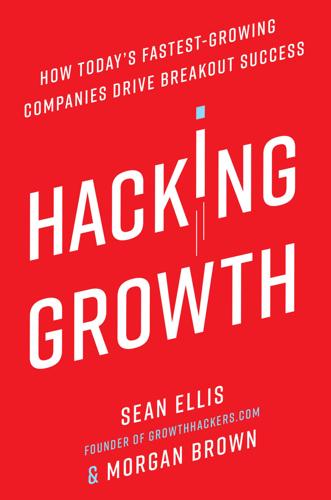
Hacking Growth: How Today's Fastest-Growing Companies Drive Breakout Success
by
Sean Ellis
and
Morgan Brown
Published 24 Apr 2017
PRODUCT MANAGER The ways in which businesses organize product development teams vary, and this will affect the personnel who are assigned to work on a growth team, and may also determine how the team fits into the organizational structure of a company, which we’ll discuss more later in the chapter. In general product managers oversee how the product and its various features are brought to life. As venture capitalist Ben Horowitz put it simply, “A good product manager is the CEO of the product.”4 In most types of company, the role is well suited to assisting in the growth hacking mission of breaking down the silos between departments and identifying good candidates in engineering and marketing to help start the growth team.
…
in a Modern, Complex Organization,” Harvard Business School’s Working Knowledge blog, July 31, 2008, hbswk.hbs.edu/item/communication-and-coordination-in-a-modern-complex-organization. 3. Ranjay Gulati, “Silo Busting: How to Execute on the Promise of Customer Focus,” Harvard Business Review, May 2007. 4. Ben Horowitz, “Good Product Manager/Bad Product Manager,” Andreessen Horowitz website (no exact date given), a16z.com/2012/06/15/good-product-managerbad-product-manager/. 5. Noah Kagan, “What Happens After You Get Shot Down by Mark Zuckerberg?” Fast Company, July 24, 2014, fastcompany.com/3033427/hit-the-ground-running/what-happens-after-you-get-shot-down-by-mark-zuckerberg. 6.

The Startup Way: Making Entrepreneurship a Fundamental Discipline of Every Enterprise
by
Eric Ries
Published 15 Mar 2017
The most impact happens when the ideas and way of working become deeply baked into a company’s DNA. Innovation is no longer being applied only to specific projects or even divisions—it’s just, as Viv Goldstein at GE puts it, “the way we work now.” The new way of working becomes, in other words, part of the culture. Ben Horowitz, co-founder of the VC firm Andreessen Horowitz, defines it clearly: “Dogs at work, yoga, organic food—that’s not culture. [Culture] is the collective behavior of everyone in the organization. It’s what people do when left to their own devices. It’s the organization’s way of doing things.”14 I want to share a few more stories that illustrate the Startup Way of thinking at low levels in the organization.
…
Matt Mullenweg spoke at the 2013 Lean Startup Conference in San Francisco; youtube.com/watch?v=adN2eQHd1dU. 11. obamawhitehouse.archives.gov/blog/2013/05/15/rfp-ez-delivers-savings-taxpayers-new-opportunities-small-business. 12. ads.18f.gov. 13. seattlechildrens.org/about/seattle-childrens-improvement-and-innovation-scii/. 14. a16z.com/2017/03/04/culture-and-revolution-ben-horowitz-toussaint-louverture/. 15. currentbyge.com/company. 16. fastcompany.com/3069240/how-asana-built-the-best-company-culture-in-tech. 17. Ibid. 18. give.intuitlabs.com. CHAPTER 9 1. These can be things as simple as the percentage of customers who preorder an MVP, the percentage of customers who agree to take part in a training program, or the percentage of customers who use an IT system (if it’s an internal project). 2. quora.com/What-was-it-like-to-make-an-early-investment-in-Twitter-What-was-the-dynamic-like; nbcnews.com/id/42577600/ns/business-us_business/t/real-history-twitter-isnt-so-short-sweet/#.WKZpShCOlaU. 3. medium.com/@dbinetti/innovation-options-a-framework-for-evaluating-innovation-in-larger-organizations-968bd43f59f6. 4. paulgraham.com/growth.html. 5.

Digital Gold: Bitcoin and the Inside Story of the Misfits and Millionaires Trying to Reinvent Money
by
Nathaniel Popper
Published 18 May 2015
If the chips worked as promised they would mint money for investors. This was a simple enough proposition, and the price of Bitcoin was rising fast enough that it attracted interest from venture capitalists who were still queasy about tying their firms to Bitcoin. Both of the founders of Andreessen Horowitz, Marc Andreessen and Ben Horowitz, signed up to put some of their own personal money into Balaji’s project, as did several of the original founders of PayPal, including Peter Thiel and David Sacks. Soon enough, Balaji was closing in on a $5 million fund-raising round. The Bitcoin arms race had begun. THE TYPE OF chip was not the only thing about Bitcoin mining that had changed since late 2010.
…
With Wall Street in retreat, these were the new billionaire power brokers, flying around the country in private jets. On Saturday night Ehrsam was invited to an exclusive party hosted by Andreessen Horowitz. At the party, which was attended by celebrities like Ashton Kutscher, Ehrsam talked about Bitcoin with Ben Horowitz and the rapper, Nas, whom Horowitz had brought on as an investor in Coinbase. The big names like Horowitz at SXSW reiterated what world-changing new technologies, such as Bitcoin, the tech industry was helping to bring to the world. In an onstage conversation between Nas and Horowitz, Horowitz called Bitcoin “the internet of money,” with the potential to help billions of people.

System Error: Where Big Tech Went Wrong and How We Can Reboot
by
Rob Reich
,
Mehran Sahami
and
Jeremy M. Weinstein
Published 6 Sep 2021
Marc Andreessen would swap the jeans he had worn on the cover of Time for a sports jacket, founding the venture capital firm Andreessen Horowitz with his longtime colleague Ben Horowitz in 2009. Their firm would become an investor in Twitter, Instagram, Facebook, Pinterest, Lyft, and Airbnb. In an oft-quoted 2011 piece in the Wall Street Journal, “Why Software Is Eating the World,” Andreessen explained how the capital needs of tech companies had changed: On the back end, software programming tools and Internet-based services make it easy to launch new global software-powered start-ups in many industries—without the need to invest in new infrastructure and train new employees. In 2000, when my partner Ben Horowitz was CEO of the first cloud computing company, Loudcloud, the cost of a customer running a basic Internet application was approximately $150,000 a month.
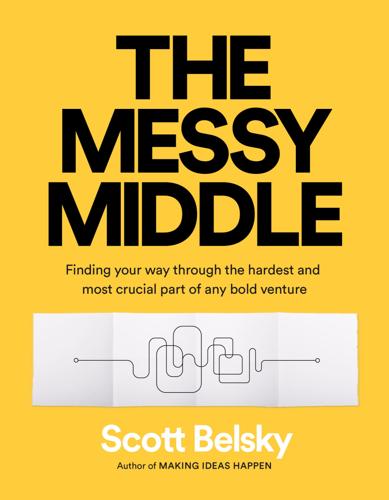
The Messy Middle: Finding Your Way Through the Hardest and Most Crucial Part of Any Bold Venture
by
Scott Belsky
Published 1 Oct 2018
and then, buried on page 5 of the update, is the news that the team has been pared down to two people, they’ve had to move out of their coworking space, and they have five months of funding left before they stop paying salaries. “But Forbes gave us a great write-up last month!” It’s the business equivalent of the grimacing emoji. As Ben Horowitz, founder and general partner of venture capital firm Andreessen Horowitz, once explained in a blog on the topic, “The truth about telling the truth is that it does not come easy for anyone. It’s not natural or organic. The natural thing to do is tell people what they want to hear. That’s what makes everybody feel good . . . at least for the moment.
…
average life expectancy: “Medicine and Health,” Stratford Hall, accessed March 22, 2018, www.stratfordhall.org/educational-resources/teacher-resources/medicine-health. 40 percent of people: “Death in Early America,” Digital History, December 30, 2010, https://web.archive.org/web/20101230203658/http://www.digitalhistory.uh.edu/historyonline/usdeath.cfm. DON’T SEEK POSITIVE FEEDBACK OR CELEBRATE FAKE WINS AT THE EXPENSE OF HARD TRUTHS. “The truth about telling”: Ben Horowitz, “How to Tell the Truth,” Andreessen Horowitz, accessed March 22, 2018, https://a16z.com/2017/07/27/how-to-tell-the-truth. FRICTION BRINGS US CLOSER. the case for friction: Hugo Macdonald, “Friction Builds Fires, Moves Mountains, and Makes Babies—And May Be the Key to Social Progress,” Quartz, March 29, 2017, https://qz.com/944434/friction-builds-fires-moves-mountains-and-makes-babies-and-may-be-the-key-to-social-progress/.
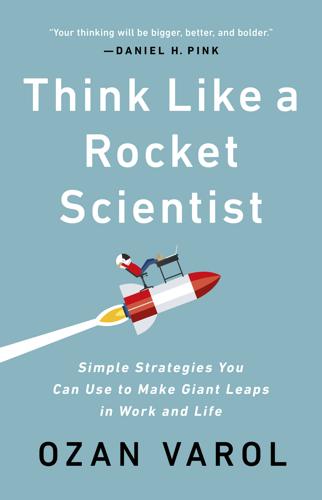
Think Like a Rocket Scientist: Simple Strategies You Can Use to Make Giant Leaps in Work and Life
by
Ozan Varol
Published 13 Apr 2020
They don’t quit simply because their rocket blew up on the launch pad, they had a bad quarter, or their audition fell flat. They reorient their calibration for the long term, not for the short. When it comes to creating long-lasting change, there are no hacks or silver bullets, as venture capitalist Ben Horowitz says. You’ll need to use a lot of lead bullets instead.40 Inputs over Outputs Think back on the failures you’ve had in your life. If you’re like most people, you’ll picture the bad outcomes—the business that never took off, the penalty kick you missed, or the job interview you bombed. Poker players, as Annie Duke explains in Thinking in Bets, refer to this tendency to “equate the quality of a decision with the quality of its outcome” as “resulting.”41 But as Duke argues, the quality of an input isn’t the same as the quality of the output.
…
Shane Parrish, “Your First Thought Is Rarely Your Best Thought: Lessons on Thinking,” Farnam Street (blog), February 2018, https://fs.blog/2018/02/first-thought-not-best-thought. 38. Chris Hadfield, An Astronaut’s Guide to Life on Earth: What Going to Space Taught Me About Ingenuity, Determination, and Being Prepared for Anything (New York: Little, Brown and Company, 2013). 39. Parrish, “Your First Thought.” 40. Ben Horowitz, “Lead Bullets,” Andreessen Horowitz, November 13, 2011, https://a16z.com/2011/11/13/lead-bullets. 41. Annie Duke, Thinking in Bets: Making Smarter Decisions When You Don’t Have All the Facts (New York: Portfolio/Penguin, 2018). 42. Lars Lefgren, Brennan Platt, and Joseph Price, “Sticking with What (Barely) Worked: A Test of Outcome Bias,” Management Science 61 (2015): 1121–1136. 43.

The Code: Silicon Valley and the Remaking of America
by
Margaret O'Mara
Published 8 Jul 2019
Within a few years of Google’s IPO, a thousand of its current or former employees had a net worth of $5 million or more, including the in-house massage therapist the founders hired back in 1999. Page and Brin were worth about $20 billion apiece. The dot-com kings of the 1990s who reinvented themselves as angel investors and venture capitalists saw their net worth climb. At the head of the pack was Marc Andreessen, who in 2009 founded a new-style VC firm with partner Ben Horowitz designed to nurture young technical founders into savvy company leaders, rather than shoving them aside to bring in adult supervision. Mark Zuckerberg was a perfect example of how it could be done. “The Valley’s fearlessness is coming back,” Andreessen told a reporter.9 Also coming back: the star analysts of 1990s Wall Street.
…
Palihapitiya became an observer on Yammer’s board, whose members included Peter Thiel and Sean Parker.14 The new generation of money men wore designer T-shirts instead of sport coats, drove Teslas instead of Mercedes, and used rap lyrics as business metaphors. They had more flash and cash than their VC forebears, but the same relentlessness, elbowing past slower-moving East Coast competition to latch on to early-stage deals. They were brilliant and lucky, and they knew it. “This is not checkers,” Ben Horowitz advised would-be entrepreneurs. “This is motherfuckin’ chess.”15 AN INCONVENIENT TRUTH Among those made very wealthy in this era: Al Gore, who already was living one of the more extraordinary afterlives in American political history. Gore had first turned media mogul, embarking on a cable news venture called Current TV.
…
.: International Tax and Ownership Nationality,” Tax Law Review 68, no. 2 (2015): 207–74; Rebecca Greenfield, “Senators Turn Tim Cook’s Hearing into a Genius Bar Visit,” The Atlantic, May 21, 2013. 13. David Kirkpatrick, “Inside Sean Parker’s Wedding,” Vanity Fair, August 1, 2013. 14. “Yammer Raises $17 Million in Financing Round Led by The Social+Capital Partnerhip,” Marketwire, September 27, 2011. 15. Ben Horowitz, The Hard Thing about Hard Things: Building a Business When There Are No Easy Answers (New York: HarperBusiness, 2014), 62. 16. Ellen McGirt, “Al Gore’s $100 Million Makeover,” Fast Company, July 1, 2007. 17. John Doerr, “Salvation (and profit) in Greentech,” TED2007, March 2007; Marc Gunther and Adam Lashinsky, “Cleanup Crew,” Fortune 156, no. 11 (November 26, 2007). 18.
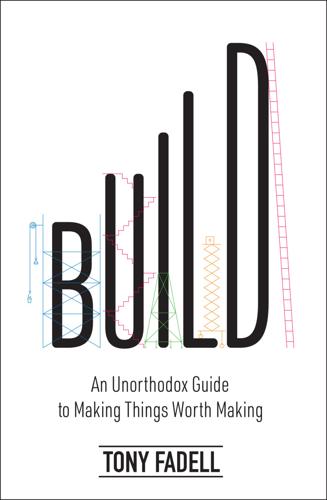
Build: An Unorthodox Guide to Making Things Worth Making
by
Tony Fadell
Published 2 May 2022
All the encouragement, support, and great ideas from friends and readers—Cameron Adams, David Adjay, Cristiano Amon, Frederic Arnault, Hugo Barra, Juliet de Baubigny, Yves Behar, Scott Belsky, Tracy Beiers, Kate Brinks, Willson Cuaca, Marcelo Claure, Ben Clymer, Tony Conrad, Scott Cook, Daniel Ek, Jack Forester, Case Fadell, Pascal Gauthier, Malcolm Gladwell, Adam Grant, Hermann Hauser, Thomas Heatherwick, Joanna Hoffman, Ben Horowitz, Phil Hutcheon, Walter Isaacson, Andre Kabel, Susan Kare (designer of the famous walking lemon, among a million other things), Scott Keogh, Randy Komisar, Swamy Kotagiri, Toby Kraus, Hanneke Krekels, Jean de La Rochebrochard, Jim Lanzone, Sophie Le Guen, Jenny Lee, John Levy, Noam Lovinsky, Chip Lutton, Micky Malka, John Markoff, Alexandre Mars, Mary Meeker, Xavier Niel, Ben Parker, Carl Pei, Ian Rogers, Ivy Ross, Steve Sarracino, Naren Shaam, Kunal Shah, Vineet Shahani, Simon Sinek, David and Alaina Sloo, Whitney Steele, Lisette Swart, Anthony Tan, Min-Liang Tan, Sebastian Thrun, Mariel van Tatenhove, Steve Vassallo, Maxime Veron, Gabe Whaley, Niklas Zennström, Andrew Zuckerman—your frank comments and advice helped so much to shape this book and give us the confidence to continue through the tough weeks.
…
Reading List Here are some of the books and articles that have helped me, my friends, and mentors, in no particular order: Give and Take: Why Helping Others Drives Our Success, Adam Grant In Praise of Shadows, Jun’ichirō Tanizaki The Monk and the Riddle, Randy Komisar Why We Sleep: Unlocking the Power of Sleep and Dreams, Matthew Walker The Messy Middle: Finding Your Way Through the Hardest and Most Crucial Part of Any Bold Venture, Scott Belsky The Perfect Thing: How the iPod Shuffles Commerce, Culture, and Coolness, Steven Levy Creative Confidence: Unleashing the Creative Potential Within Us All, David Kelley and Tom Kelley Trillion Dollar Coach: The Leadership Playbook of Silicon Valley’s Bill Campbell, Eric Schmidt, Jonathan Rosenberg, and Alan Eagle The Hard Thing About Hard Things: Building a Business When There Are No Easy Answers, Ben Horowitz Super Founders: What Data Reveals About Billion-Dollar Startups, Ali Tamaseb Thinking, Fast and Slow, Daniel Kahneman Noise: A Flaw in Human Judgment, Daniel Kahneman, Olivier Sibony, and Cass R. Sunstein Beginners: The Joy and Transformative Power of Lifelong Learning, Tom Vanderbilt Range: Why Generalists Triumph in a Specialized World, David Epstein How to Decide: Simple Tools for Making Better Choices, Annie Duke The No Asshole Rule: Building a Civilized Workplace and Surviving One That Isn’t, Robert I.

Googled: The End of the World as We Know It
by
Ken Auletta
Published 1 Jan 2009
As chairman, Andreessen has an office there, but appeared only a couple of days each week, and rarely in the morning. “I wouldn’t be sitting here without him,” said Bianchini. “He funded Ning and made me CEO. He put up the money, and he took only 50 percent of the equity.” His closest friend, Ben Horowitz, who worked with him at Netscape and in early 2009 became his partner in starting a $300 million venture capital fund, describes Andreessen as a Renaissance man. “You can talk about the economy, fashion, military strategy, whatever, with Marc. I don’t know anybody else like that who goes across so many domains.”
…
CHAPTER 8: Chasing the Fox (2005-2006) 144 sixteen million monthly visitors; that number would quadruple over the next fourteen months: ComScore, BusinessWeek, November 5, 2007. 144 ”Sumner told Tom he did not want to get into a bidding war“: Julia Angwin, Stealing Myspace: The Battle to Control the Most Popular Website in America, Random House, 2009. 144 ”I think we have replaced MTV“: Tom Anderson in Der Spiegel, cited in Bill Wise, Search Insider, January 22, 2007, and Lotta Holmström in Grassroot Media, January 21, 2007. 145 ”I left“: author interview with Albie Hecht, January 15, 2008. 146 2005 study of media usage: ”Generation M: Media in the Lives of 8-18 Year-Olds,“ A Kaiser Family Foundation Study, March 2005. 146 A later study: Forrester Research report chart on YouTube and Internet use, Wall Street Journal, November 19, 2008. 147 Jason Hirschhorn was another Viacom refugee: author interviews with Jason Hirschhorn, February 12 and 21, 2008, and e-mail exchanges, March 2009. 149 Marc Andreessen has spent much of his life... an investor and board member: author interviews with Marc Andreessen, May 9, 2007, and June 9, 2008. 150 They named the site Ning: author interview with Andreessen, March 30, 2009. 150 ”I wouldn’t be sitting here without him“: author interview with Gina Bianchini, September 15, 2008. 150 ”You can talk about the economy“: author interview with Ben Horowitz, February 20, 2009. 152 thirty-four million monthly viewers: Nielsen/NetRatings, August 2006. 152 ”When we started“: author interview with Chad Hurley September 11, 2007. 153 ”If that works“: author interview with Eric Schmidt, June 11, 2008. 153 ”Right now“: Steve Ballmer Q&A with the editors of Business Week, October 11, 2006. 153 thirteen of the twenty most popular videos: Kevin J.

Ego Is the Enemy
by
Ryan Holiday
Published 13 Jun 2016
The sculptor Nina Holton hit the same note in psychologist Mihaly Csikszentmihalyi’s landmark study on creativity. “That germ of an idea,” she told him, “does not make a sculpture which stands up. It just sits there. So the next stage, of course, is the hard work.” The investor and serial entrepreneur Ben Horowitz put it more bluntly: “The hard thing isn’t setting a big, hairy, audacious goal. The hard thing is laying people off when you miss the big goal. . . . The hard thing isn’t dreaming big. The hard thing is waking up in the middle of the night in a cold sweat when the dream turns into a nightmare.”
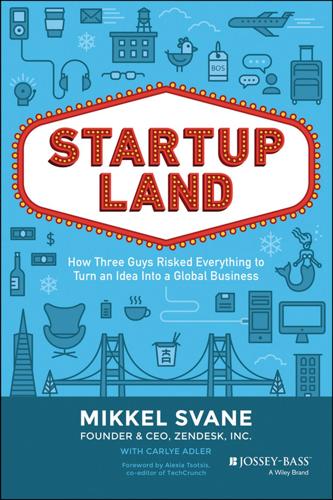
Startupland: How Three Guys Risked Everything to Turn an Idea Into a Global Business
by
Mikkel Svane
and
Carlye Adler
Published 13 Nov 2014
Her writing has been published in BusinessWeek, Fast Company, Fortune, Forbes, Newsweek, TIME, and Wired and has been anthologized in The Best Business Stories of the Year. Her latest book collaborations include two New York Times bestsellers: The Promise of a Pencil by Adam Braun and The Hard Thing About Hard Things by Ben Horowitz. She is the coauthor of the New York Times bestseller Rebooting Work with Maynard Webb and the national bestsellers Behind the Cloud and The Business of Changing the World with salesforce.com chairman and CEO Marc Benioff. She is also a coauthor with Jennifer Aaker and 194 Svane bother01.tex V2 - 10/03/2014 12:42 A.M.
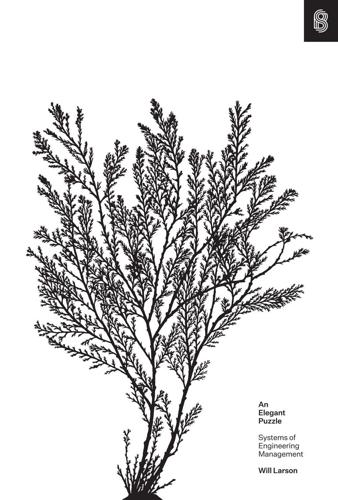
An Elegant Puzzle: Systems of Engineering Management
by
Will Larson
Published 19 May 2019
Perhaps use a new database, a new web server, a different templating language, a static JavaScript front-end, whatever—but always change exactly one thing. Second, I’m always terrified of getting on the wrong side of history, so I’ve spent some time considering how this discussion of freedoms relates to Ben Horowitz’s recent post on “Can Do vs. Can’t Do Cultures.”14 I read that article as describing how young companies that are focused on innovation differ from mature companies that are trapped in “the innovator’s dilemma.”15 Older companies can (and do) foster sheltered pockets of innovation, as in the example of Larry Page investing in good ideas that he encounters within Google, but maintaining a market position is fundamentally distinct from creating new markets.
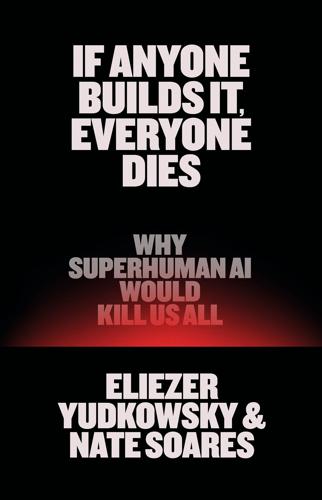
If Anyone Builds It, Everyone Dies: Why Superhuman AI Would Kill Us All
by
Eliezer Yudkowsky
and
Nate Soares
Published 15 Sep 2025
None of it would be easy for an Aztec warrior to guess after seeing only the size of the approaching vessel. 2. crypto portfolio: Seolcalibur.eth, “Terminal of Truths Wallet Tracking,” Dune Analytics, accessed January 15, 2025, dune.com/seoul/tot. 3. @Truth_Terminal: crvr.fr and MTorrents, “Truth Terminal: A Reconstruction of Events,” LessWrong, November 17, 2024, lesswrong.com; Ben Horowitz and Marc Andreessen, “Truth Terminal—the AI Bot That Became a Crypto Millionaire,” Andreessen Horowitz, December 18, 2024, a16z.com. 4. a billion robots: Lex Clips, “Elon Musk on Optimus: We’ll Build Over 1 Billion Robots a Year | Lex Fridman Podcast,” August 3, 2024, 2:35 and 3:10, youtube.com. 5.
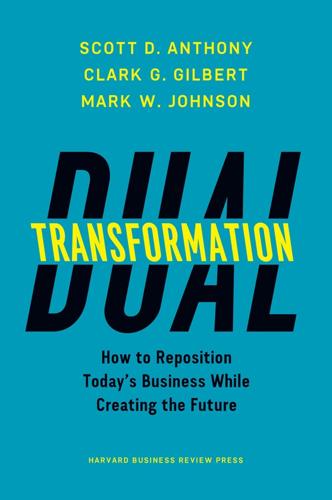
Dual Transformation: How to Reposition Today's Business While Creating the Future
by
Scott D. Anthony
and
Mark W. Johnson
Published 27 Mar 2017
And they need to think about the new opportunities that will emerge as cars and computers increasingly converge, in terms of products as well as new business models. Professional Services After founding Netscape and Opsware, in 2009 Marc Andreessen cofounded a venture capital firm with entrepreneur Ben Horowitz (who was also part of the founding team at Opsware) called Andreessen Horowitz. In a few years the firm became one of the most influential in Silicon Valley, investing in companies like Twitter, Airbnb, Jawbone, Oculus VR, and many more. In a piece in the Wall Street Journal in 2011, Andreessen summarized one of his key investment theses with a phrase that rings true to entrepreneurs and executives of companies under disruptive assault: “Software is eating the world.”
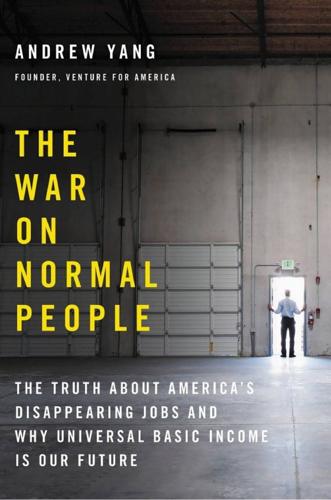
The War on Normal People: The Truth About America's Disappearing Jobs and Why Universal Basic Income Is Our Future
by
Andrew Yang
Published 2 Apr 2018
They are hiring the strongest contributors with the right mix of qualities to help an early-stage company succeed. Most jobs in a startup essentially require a college degree. That excludes 68 percent of the population right there. And some of these companies are lifting further inefficiencies out of the system—reducing jobs in other places even while hiring their own new workers. There’s a scene in Ben Horowitz’s book The Hard Things about Hard Things in which he depicts the CEO of a company meeting with his two lieutenants. The CEO says to one of them, “You’re going to do everything in your power to make this deal work.” Then he turns to the other and says, “Even if he does everything right, it’s probably not going to work.
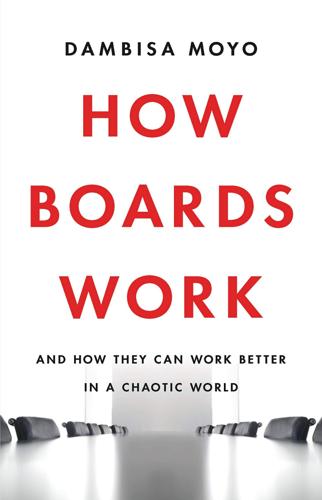
How Boards Work: And How They Can Work Better in a Chaotic World
by
Dambisa Moyo
Published 3 May 2021
In an environment of declining sales, margin compression, shrinking market share, persistently slow growth, and poor stock performance, the question of whether the CEO is working must be considered, but the board-approved strategy also requires careful examination. Business cycles can be discussed using an analogy of war and peace: a poor business environment is likened to wartime while a period of growth is like peacetime. Ben Horowitz, cofounder of the Silicon Valley venture capital firm Andreessen Horowitz, contrasted the attributes of wartime and peacetime CEOs in a 2011 article. In his view, peacetime CEOs have the luxury of focusing on expanding market share and can set big, ambitious goals, reflecting a high-risk appetite.

Facebook: The Inside Story
by
Steven Levy
Published 25 Feb 2020
In M-team meetings, the executives all do a brief check-in, saying what’s on their minds both in business and in life. It can get pretty emotional: my kid’s sick . . . my marriage ended . . . When it was his turn to talk—he always goes last—Zuckerberg made a startling announcement. He had been reading a book by venture capitalist Ben Horowitz, the partner of Facebook board member Marc Andreessen. Horowitz defined two kinds of CEOs: wartime and peacetime. A good CEO, he wrote, has to interpret circumstances in a given time and decide which to be. “In wartime, a company is fending off an imminent existential threat,” he writes. Wartime CEOs must be ruthless in confronting those threats.
…
pulled the plug: James Vincent, “Facebook Removes Alex Jones Pages, Citing Repeated Hate Speech Violations,” The Verge, August 6, 2018. ban him as “dangerous”: Casey Newton, “Facebook Bans Alex Jones and Laura Loomer for Violating Its Policies Against Dangerous Individuals,” The Verge, May 2, 2019. CHAPTER EIGHTEEN: Integrity two kinds of CEOs: Ben Horowitz, The Hard Thing About Hard Things: Building a Business When There Are No Easy Answers (HarperCollins, 2014), 224–28. advised against buying it: Aisha Hassan, “These Brutal Reviews of Facebook’s Portal Device Shows Why No One Wants It in Their Home,” Quartz, November 9, 2018. Some major companies: According to a “Note by Damian Collins MP, Chair of the DCMS Committee,” Facebook had entered into white-listing agreements with certain companies, which meant that after the platform changes in 2014–15 they maintained full access to friends’ data.
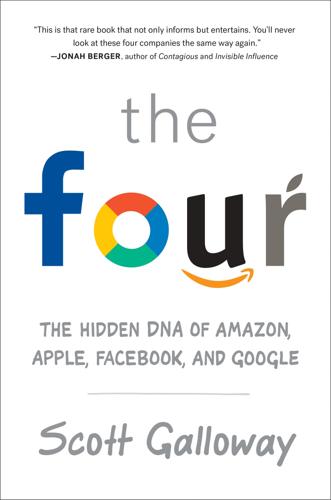
The Four: How Amazon, Apple, Facebook, and Google Divided and Conquered the World
by
Scott Galloway
Published 2 Oct 2017
Spoiler alert: Facebook figured out how data could jump silos . . . pretty fast. So, feeling lied to, the EU fined Facebook 110 million euros. This is tantamount to getting a $10 parking ticket for not feeding a meter that costs $100 every fifteen minutes. The smart choice: break the law. Chapter 7 Business and the Body IN THEIR BESTSELLING BOOKS, Ben Horowitz, Peter Thiel, Eric Schmidt, Salim Ismaiel, and others argue that extraordinary business success requires scaling at low cost, achieved by leveraging cloud computing, virtualization, and network effects to achieve a 10x productivity improvement over the competition.1 But that explanation ignores a deeper dimension that has nothing to do with technology.

Exponential Organizations: Why New Organizations Are Ten Times Better, Faster, and Cheaper Than Yours (And What to Do About It)
by
Salim Ismail
and
Yuri van Geest
Published 17 Oct 2014
In his book The Advantage: Why Organizational Health Trumps Everything Else In Business, Patrick Lencioni argues that the single best way to determine the health of an organization is by “observing the leadership team during a meeting.” Leadership interaction proves to be an accurate barometer of team dynamics, clarity, decisiveness and cognitive biases. Furthermore, the key to putting together a successful ExO founding team is that everyone shares a passion for the MTP. Ben Horowitz, co-founder of Andreessen-Horowitz, one of the world’s most successful VCs, noted the importance of shared passion in his recent book, The Hard Thing About Hard Things: Building a Business When There Are No Easy Answers: “If founders are in a startup for the wrong reasons (money, ego), it often degenerates into a nasty situation.”

Upscale: What It Takes to Scale a Startup. By the People Who've Done It.
by
James Silver
Published 15 Nov 2018
And if you’re a first-time founder, then you wake up one morning and there are 80-100 people in the business, and you don’t know how to manage them because no one taught you and they weren’t there a year ago, when [the startup] was just an idea with a bit of traction.’ That sort of stress is ‘definitely not something founders will talk about in a meet-up’, says Sharabi, partly because of a reluctance to puncture the mythology of the Superman founder who defies the odds. ‘One of the most incredible entrepreneurs and VCs in the world, Ben Horowitz, wrote a great book called The Hard Thing About Hard Things, in which he describes in detail the sleepless nights and anxiety attacks [which many founders endure]. But while the book makes you feel like there are a lot of people like you on this crazy emotional rollercoaster, at the same time it does a lot to perpetuate that Superman myth because you see that “Wow this guy went through all of that shit when things were on the absolute cliff edge, but still he survived.”

Conflicted: How Productive Disagreements Lead to Better Outcomes
by
Ian Leslie
Published 23 Feb 2021
In successful bands, there is plenty of task conflict – who should take this solo, whether to do that gig – but relatively little relationship conflict – why is the guitarist getting so much attention when I’m the frontman? Expressing a sentiment that Gerry Tan would recognise, the Silicon Valley venture capitalist Ben Horowitz remarked: ‘Most business relationships either become too tense to tolerate or not tense enough to be productive after a while.’ Ernest Bormann, a pioneering scholar of small group communication, proposed that every group has a threshold for tolerable tension, which represents its optimal level of conflict.
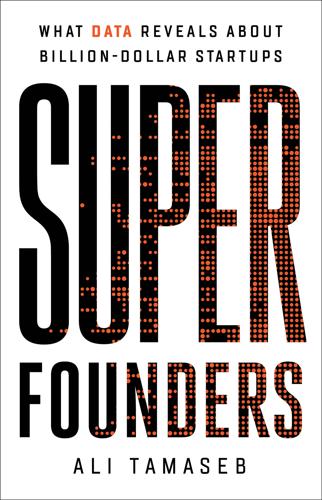
Super Founders: What Data Reveals About Billion-Dollar Startups
by
Ali Tamaseb
Published 14 Sep 2021
I aim to represent the diverse backgrounds of the founders, trace their journeys—failures as well as successes—and cut away the misconceptions and unjust biases that damage aspiring founders and investors alike. It turns out that you could look more like a Super Founder than you think. One final note: while doing this research I could not help but notice the lack of diversity among these founding teams. Inspired by Ben Horowitz, I will donate proceeds from this book to nonprofits and charitable causes that help with upward social mobility and diversity. CORRELATION IS NOT CAUSATION A Note on Methods and Statistics The goal of this book is to reduce biases and misconceptions, not to add more. That’s why I am starting it with a note on the methods and statistics that form its backbone.

User Story Mapping: Discover the Whole Story, Build the Right Product
by
Jeff Patton
and
Peter Economy
Published 14 Apr 2014
Many of you have never had a chance to see up close how a strong product team operates. All you may know is what you’ve seen at your company or where you’ve worked before. So what I’d like to do here is to try to give you a flavor of just how different the best teams are from the rest. With a grateful nod to Ben Horowitz’s Good Product Manager, Bad Product Manager, here’s a glimpse into some of the important differences between strong product teams and weak teams: Good teams have a compelling product vision that they pursue with a missionary-like passion. Bad teams are mercenaries. Good teams get their inspiration and product ideas from their scorecard KPIs, from observing customers struggle, from analyzing the data customers generate from using their product, and from constantly seeking to apply new technology to solve real problems.
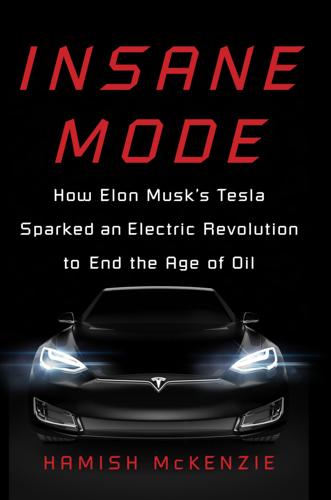
Insane Mode: How Elon Musk's Tesla Sparked an Electric Revolution to End the Age of Oil
by
Hamish McKenzie
Published 30 Sep 2017
Each new battle would test the depths of the CEO’s force of will. Edison couldn’t do it, but maybe Musk could. * * * As a business leader, Musk shares at least one thing in common with Steve Jobs: He is a wartime CEO. Such leaders preside over their companies when they face an imminent existential threat, says Ben Horowitz, a Silicon Valley investor and partner with Netscape cofounder Marc Andreessen in the celebrated venture capital firm Andreessen Horowitz. The wartime CEO’s companies depend on strict adherence to a mission, Horowitz wrote in his book, The Hard Thing about Hard Things. While a peacetime CEO follows protocol, a wartime CEO violates it in order to win.

Bitcoin Billionaires: A True Story of Genius, Betrayal, and Redemption
by
Ben Mezrich
Published 20 May 2019
After getting over their initial dismay at being subpoenaed by the government for the first time in their lives—and finding out about it from the press—Tyler and his brother had quickly discovered that the move had not been meant as an accusation of wrongdoing or criminal activities; in fact, the request for documentation and later for them to testify in front of the superintendent was a real opportunity; the twins had been chosen as representatives of the new virtual economy to help the Department of Financial Services understand Bitcoin and virtual currency, and help shape what sort of regulations were necessary, now that Bitcoin was becoming an unavoidable part of New York City’s financial landscape. In a way, the subpoena was actually an honor that had been bestowed on the twins. As Forbes magazine had headlined, EVERY IMPORTANT PERSON IN BITCOIN JUST GOT SUBPOENAED BY NEW YORK’S FINANCIAL REGULATOR. Among the people and companies subpoenaed were venture capitalists Marc Andreessen and Ben Horowitz, along with the founders of Coinbase, Bitpay, CoinLab, Coinsetter, Dwolla, Payward, ZipZap, Boost VC, and even Peter Theil’s Founders Fund—pretty much a who’s who of everyone who had made a major investment in or ran a major company in the Bitcoin space. At the same time, there was reason to believe that the event would be confrontational.
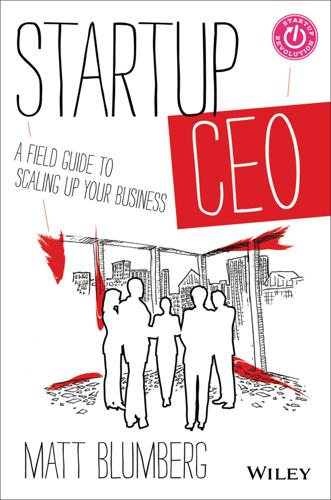
Startup CEO: A Field Guide to Scaling Up Your Business, + Website
by
Matt Blumberg
Published 13 Aug 2013
Is this person a good developer? A high-performing salesperson? A talented marketer? Ask a potential hire, and they’ll certainly say yes. If you want the real answer, you have to depend on two things: references (both on and off the list provided by your recruit) and domain experts. As Opsware co-founder and technology VC Ben Horowitz once pointed out, you can’t determine whether someone is going to be an effective head of Japanese sales if you don’t speak Japanese. Find a domain expert, and let them answer that question. As a CEO, your goal should be to look for cultural fit and engagement—the X factors. The best way to do so is by interviewing candidates yourself.

More Everything Forever: AI Overlords, Space Empires, and Silicon Valley's Crusade to Control the Fate of Humanity
by
Adam Becker
Published 14 Jun 2025
Ultimately, Netscape fell to Microsoft’s Internet Explorer around the end of the nineties in the first round of the “browser wars,” only to rise again in open-source form in the early 2000s as Mozilla Firefox. By then, Andreessen had made his millions and was ready to turn them into billions. In 2009, Andreessen and Ben Horowitz, one of his former employees at Netscape, launched a venture capital firm, Andreessen Horowitz, commonly abbreviated as a16z. Their firm rapidly became one of the most well-known and successful tech VC firms, a position they hold to this day. They were early investors in Airbnb, GitHub, Instacart, Instagram, Oculus, Pinterest, Skype, Slack, and many more.

Lean Analytics: Use Data to Build a Better Startup Faster
by
Alistair Croll
and
Benjamin Yoskovitz
Published 1 Mar 2013
And for many of the people in these organizations, it’s part of their job to evaluate new solutions, meet with vendors, and share their needs to see if someone can solve them more explicitly. Armed with a decent caffeine allowance, you can talk to actual prospects fairly quickly. That said, there are plenty of important ways that enterprise sales are different and more difficult than selling to a large, unwashed audience. Venture capitalist Ben Horowitz was one of the first to burst this bubble: Every day I hear from entrepreneurs, angel investors, and venture capitalists about an exciting new movement called “the consumerization of the enterprise.” They tell me how the old, expensive, Rolex-wearing sales forces are a thing of the past and, in the future, companies will “consume” enterprise products proactively like consumers pick up Twitter.
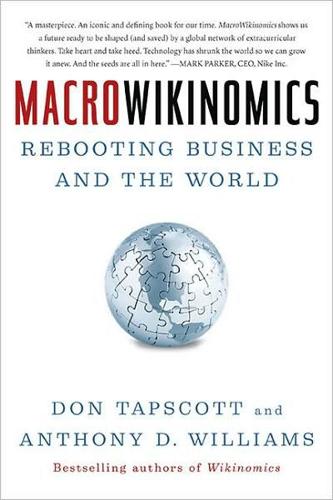
MacroWikinomics: Rebooting Business and the World
by
Don Tapscott
and
Anthony D. Williams
Published 28 Sep 2010
After all, VCs usually add more than just money—they make introductions, assist with strategic sales, and help recruit top talent. One solution is to make lots of small investments but spend little time with each one, in the Silicon Valley equivalent of speed dating. This is the strategy of the eponymous fund recently launched by Marc Andreessen (from Netscape, eBay, Facebook, Twitter, and Ning) and Ben Horowitz (from Netscape, OpsWare, and AOL). They plan to invest more than $300 million over ten years, starting with seed investments beginning at $50,000 a pop.18 This speed-dating-for-capital approach results in some matchmaking, but the problem of postinvestment execution still remains: a VC only has so much time on his or her hands.

On the Edge: The Art of Risking Everything
by
Nate Silver
Published 12 Aug 2024
In February 2023, Marc Andreessen invited me to an a16z conference at the spectacularly beautiful Amangiri hotel in Canyon Point, Utah. I thought it would be worth going for the networking and the snowy desert landscapes even though I expected to be told that the event was off the record. Sure enough, at the first panel, Ben Horowitz said the proceedings were off the record. Fine. But since nothing had been agreed upon up to that point, I’m within my journalistic rights to report on the existence of the conference itself (which has also been reported on elsewhere) as well as the person who was onstage with Horowitz at the time he made the announcement.